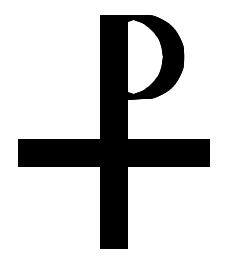 |
Detail from The Vision of the Cross
Assistants of Raphael (1483-1520)
Vatican |
It is only natural that Renaissance painters would draw the Cross when depicting the vision of Constantine the Great before the
Battle of the Milvian Bridge October 28, 312.
Similarly we naturally think the Cross when we read about the
sign of the Son of Man in heaven in the apocalyptic speech of Jesus according to Matthew
Then will appear the sign of the Son of Man in heaven. And then all the peoples of the earth will mourn when they see the Son of Man coming on the clouds of heaven, with power and great glory.
Matthew 24:30 NIV
But Constantine did not see the cross.
Christ wins Constantine through the sun
The battle between the forces of Emperors Constantine I and Maxentius was critical. Both were pagan rulers and since young, Constantine had been fascinated by the cult of Sol Invictus, Invincible Sun, that had recently become popular in the Empire.
Now, before leading his army to the battle, Constantine looked at the divine sun. However, he saw upe there something strange the significance of which he did not know. He heard a voice saying
en touto nika, in this thing conquer. Next night he saw a dream and in the morning Constantine dutifully let his soldiers paint that sign on their shields and helmets. That day competing Emperor Maxentius fell from the bridge and drowned in Tiber. Constantine thus became the sole Emperor of Rome.
The Labarum
 |
Labarum of Constantine I
reconstruction. The circles had images in them |
What Constantine I actually saw in the vision was not the sign of the common cross but the
labarum, Chi-Rho sign with the two first letters of the word Xhristos.
 |
| Coin of Constantine I with labarum |
Historical sources
Lucius Caecilius Firmianus Lactantius was an early Christian author (c. 240 – c. 320) who became an advisor to the first Christian Roman emperor, Constantine I, guiding his religious policy as it developed, and tutor to his son. His work De Mortibus Persecutorum has an apologetic character, but has been treated as a work of history by Christian writers. Here Lactantius preserves the story of Constantine's vision of the Chi Rho before his conversion to Christianity. The full text is found in only one manuscript, which bears the title, Lucii Caecilii liber ad Donatum Confessorem de Mortibus Persecutorum.
The historian bishop Eusebius of Caesaria states that Constantine was marching with his army (Eusebius does not specify the actual location of the event, but it is clearly not in the camp at Rome), when he looked up to the sun and saw a cross of light above it, and with it the Greek words "(ἐν) τούτῳ νίκα" ("In this, conquer"), often rendered in Latin as In hoc signo vinces ("in this sign, you will conquer").
At first, Constantine did not know the meaning of the apparition, but on the following night, he had a dream in which Christ explained to him that he should use the sign of the cross against his enemies. Eusebius then continues to describe the Labarum, the military standard used by Constantine in his later wars against Licinius, showing the Chi-Rho sign.
read the entire article form wikipedia

















